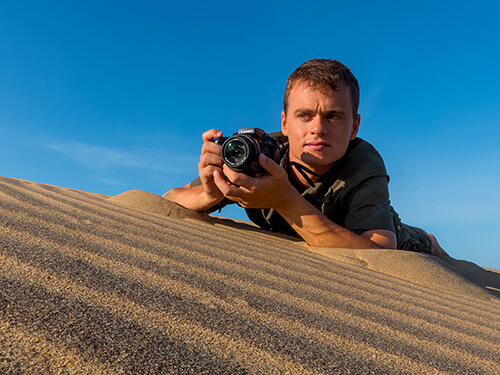A wildlife photographer, born in Hungary, 1985. In 2010 he won the prestigious BBC Wildlife Photography of the Year award in London. He is the most effective photographer in the 53-year-old history of the competition, being the only contestant winning the first prize in both the young and adult categories.
In 2005 he experimented the one-way glass photography technique, making fundamental changes in hide photography practice. This technique has been widely used all over the world, and most hides are equipped with such glasses.
Since 2008 he has been designing wildlife photography hides in different parts of the world (Hungary, Costa Rica, Brazil, Norway, South-Africa and Transylvania, Romania). His enterprise operating in Hungary welcomes photographers with the most exclusive hides in the world.
Books: The Invisible Wildlife Photographer (English, Hungarian), The Handbook of Bird Photography (Markus Varesvuo, Jari Peltomäki, Bence Máté; English, German, Finnish, French).
Statement
"A great wildlife photo is technically perfect, innovative, and unrepeatable. It is a genuine reflection of what took place, and the subjects must be able to move around as they wish. Whilst Photoshop can be used to enhance an image, the sole goal of post-production should be to reflect reality in the most accurate way possible." -- Bence Mate
